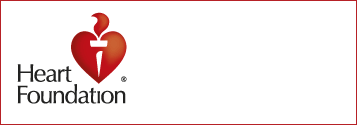Common medical procedures for heart conditions
Once your doctor knows what your heart condition is, he or she will then decide what treatments or procedures you may need.
Some of these procedures and treatments are explained below.
Coronary angioplasty and stent implantation
Coronary angioplasty is a procedure that helps to improve blood flow to your heart.
A small balloon is inflated inside one or more of your coronary arteries to open up an area that has become very clogged and, therefore, narrow.
After this, a special expandable metal tube (a ‘stent’) is usually put into the artery, expanded, and left there to keep the artery open.
There are two types of stents:
- bare metal stents (BMS)
- drug-eluting stents (DES).
Coronary angioplasty is not a cure for coronary heart disease. It only treats the part of the coronary artery that has become very narrow.al
Thrombolytic therapy
Thrombolytic therapy is a treatment in which you are given medicines through a drip to dissolve a blood clot that is narrowing or blocking a coronary artery.
This improves blood flow to your heart muscle and around your body.
Coronary artery bypass graft surgery (CABG)
Coronary artery bypass graft surgery is also called bypass surgery or ‘CABG’ (pronounced ‘cabbage’). In this operation a blood vessel is taken from your chest, leg or arm and attached (‘grafted’) to your coronary artery. This lets blood detour (‘bypass’) around a narrowing or blockage in this artery.
During this operation, your surgeon will cut down the midline of your chest, through your breastbone, to reach your heart.
Bypass surgery improves blood flow to your heart muscle and reduces angina.
Artificial pacemaker surgery
An artificial pacemaker is a small device that is put under the skin of your chest, below your collar bone. One or two wires connect the pacemaker to the chambers of your heart.
A pacemaker makes small electrical currents that stimulate your heart muscle and help it pump regularly.
A pacemaker’s battery can last up to 10 years. Your doctor can check the battery every year, and replace it when needed.
Defibrillation
Defibrillation helps to restore a normal heart rhythm when your heart stops beating properly during cardiac arrest. It may also be used to treat other heart rhythm problems (like if your heart beats too slowly or too fast).
Paddles or pads are put on your chest. A regulated electrical current is applied to your heart to make it start beating regularly again.
You may be given an implantable cardiac defibrillator (ICD). This small device is put into your chest and connected to your heart by one or more wire leads. It monitors your heart rhythm and corrects it if it beats too slowly, too fast or stops beating.
Heart valve surgery
Heart valve surgery fixes a damaged or faulty heart valve and helps your heart to pump blood properly.
Your surgeon cuts down the midline of your chest, through your breastbone, to reach your heart. The faulty heart valve will then be repaired or replaced.
Where to get help
- Always dial triple zero (000) to call an ambulance in a medical emergency
- See your doctor
- Visit healthdirect (external site) or call 1800 022 222
- Phone the Heart Foundation Helpline on 13 11 12
The above information is extracted from My heart, my life: a manual for patients with coronary heart disease, and is used with the Heart Foundation’s permission. © 2012 National Heart Foundation of Australia.

Acknowledgements
Heart Foundation
This publication is provided for education and information purposes only. It is not a substitute for professional medical care. Information about a therapy, service, product or treatment does not imply endorsement and is not intended to replace advice from your healthcare professional. Readers should note that over time currency and completeness of the information may change. All users should seek advice from a qualified healthcare professional for a diagnosis and answers to their medical questions.